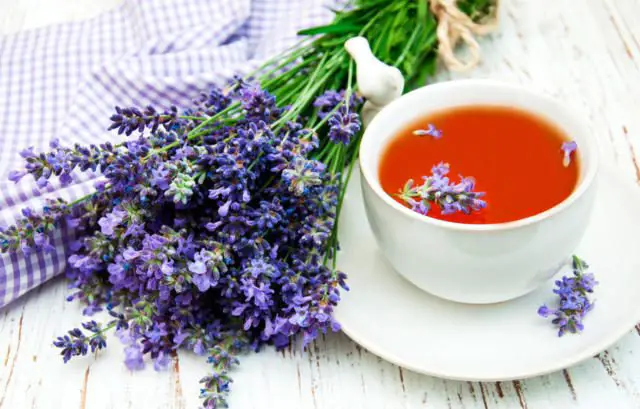Medicinal herbs (or herbal remedies) are plants used as medicine. People use them to help prevent or cure a disease. They use them to relieve symptoms, increase energy, relax, or lose weight.
Medicinal plants have been shown to have the same properties that can be very beneficial for health. And are those plants that produce secondary metabolites, called “active principles”, chemical substances that exert a pharmacological action, either beneficial or harmful, on the living organism.
For this reason, these types of plants are used as a natural remedy, according to their properties, to alleviate common diseases and ailments, as well as a means of preventing different ailments.
Present since antiquity
Since ancient times, medicinal plants have been used to treat common diseases and ailments, thanks to their healing properties. Their origin dates back to ancient times, since before modern medicine and synthetic medicines existed, various ancient civilizations used these plants to treat diseases and common ailments.
It is known that the Egyptians used medicinal herbs around 1550 BC, as did the Greeks in the 16th century BC. Also, medicinal plants were common during the Middle Ages, as well as in the Modern Age, before the discovery of America.
In the 19th and 20th centuries, knowledge of medicinal plants was passed down from generation to generation, mainly women being credited with the use of healing herbs to treat common illnesses and ailments.
What are they used for
Medicinal plants contain chemical substances in their leaves or flowers, the stem or the root, so that, through different preparation methods, they can be applied to treat different conditions. According to the properties of each plant, these can be used to treat anything from a simple headache to more serious conditions.
Throughout life it is natural that, sometimes, you have certain conditions and, although it is always advisable to go to the specialist to be sure of what is happening, it is also convenient to clarify that drugs are not always required as a palliative. Medicinal plants have been shown to be very beneficial for health with their same properties.
Many people believe that using plants to treat a disease is safer than taking a medicine. People have been using plants in folk medicine for hundreds of years. So it’s easy to see the appeal. Although “natural” does not mean safe. Unless taken as directed, some herbs can interact with other medications or be toxic in high doses. Also, they can cause sideeffects.
Of course, some herbs have been tested and work well for their intended purpose. Many are also very safe, but the word “natural” won’t tell you which ones are safe and which ones are not.Some herbal remedies can make you feel better and help you stay healthy. But you need to be a smart consumer.
Use these tips when choosing herbal remedies
It has been shown that cannabis can slow down Alzheimer’s or the advance of cancer cells. It also serves as a pain reliever and some people use it to deal with depression or anxiety. And these are just some of the properties it has. As a plant its benefits are clear and it is up to everyone to know how and what to use it for.

Let’s see in a little more detail what its main benefits tend to be:
Anti-inflammatory
In this case, we are referring to both inflammations that may take place within the body and external ones. This benefit occurs because some plants have a double action in such a way that they alleviate the ailment and, at the same time, eliminate the root problem. An example of this is found in turmeric or verbena.
Astringents
What these plants achieve is a contraction of the affected organic tissues, as occurs with sage or yarrow.
Diuretics
Highly recommended when what you are looking for is to cleanse the body and leave it free of toxins and impurities that may have accumulated over the years. As an example of these we can find the horsetail.
Stimulants
Ideal when you are going through moments of great tiredness or you want to deal with fatigue. For this the best allies are echinacea, St. John’s wort as well as astragalus.
Of course, there are many more benefits such as: tranquilizers, laxatives or antipyretics. The important thing is, after knowing the cause of the problem, to see if any plant has a benefit that can be useful and do the test.
Preparation and administration
Depending on the medicinal plant in question, these have specific properties to cure or prevent certain diseases or ailments. Helpful compounds are usually found in certain parts of the plant, such as its seeds, roots, leaves, or flowers. Therefore, the usable part of the plant depends on the species in question, and there are different forms of preparation and administration.
Infusion
The active ingredients of the plant are dissolved in water by cooking to create a drinkable herbal tea.
Poultices
They are prepared by crushing the part of the plant that contains the healing properties to apply directly to the affected area.
Salad

It is a way of ingesting medicinal herbs in a direct way.
Syrups
They are prepared by extracting the active or medicinal components of the plant with water and dissolving with sugar or honey to ingest it.
Juices
They are obtained by squeezing or blending fresh plants or their fruits.
Washes
It is the application of infusions to treat localized external conditions, such as wounds, sores, ulcers, among others.
Vapors
The vapors of certain plants, emitted by the action of heat, are used for the treatment of respiratory tract conditions.
Phytopharmaceutical preparations
The extracts obtained industrially to be taken as a medicine or used as an ointment.

